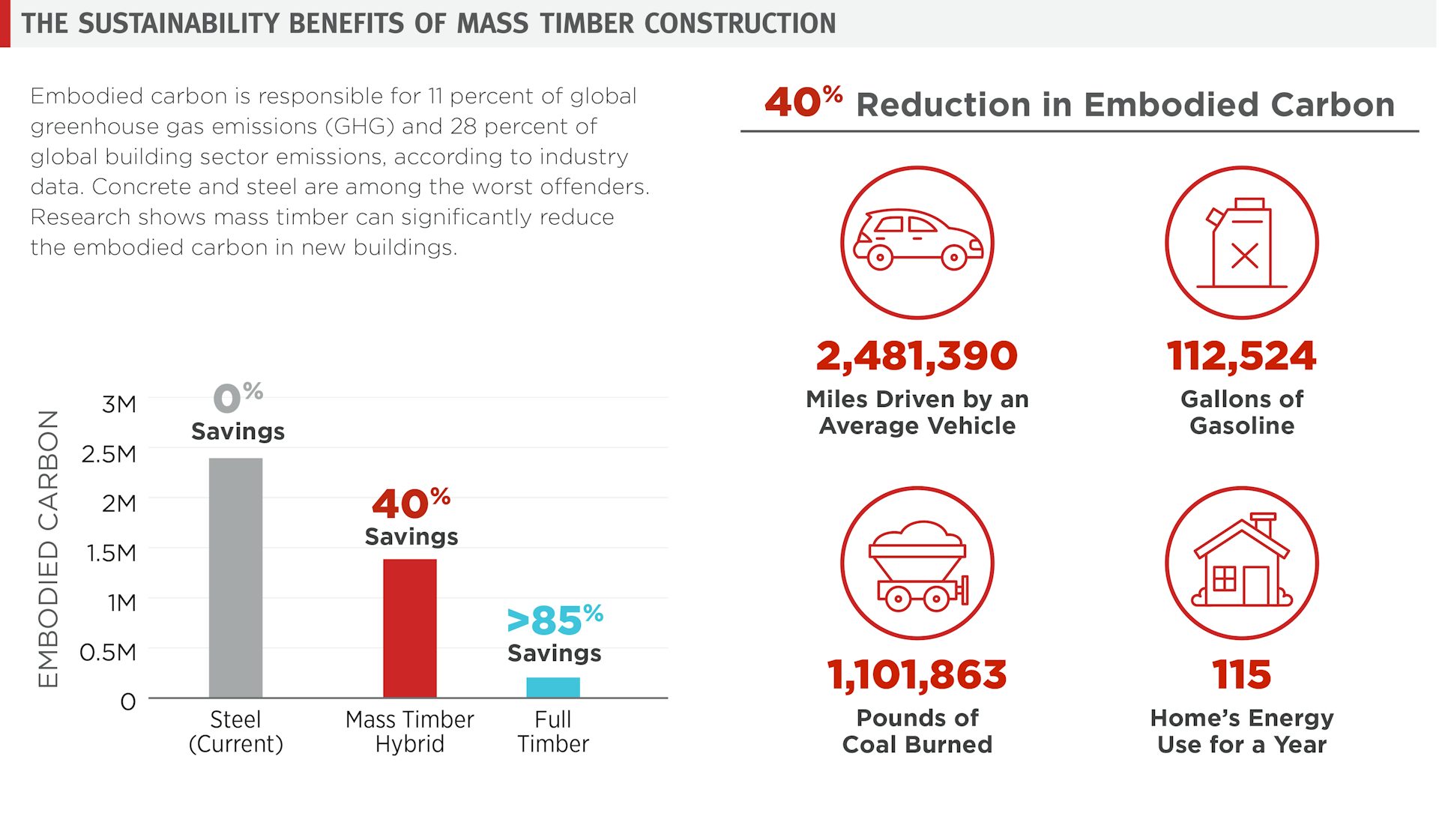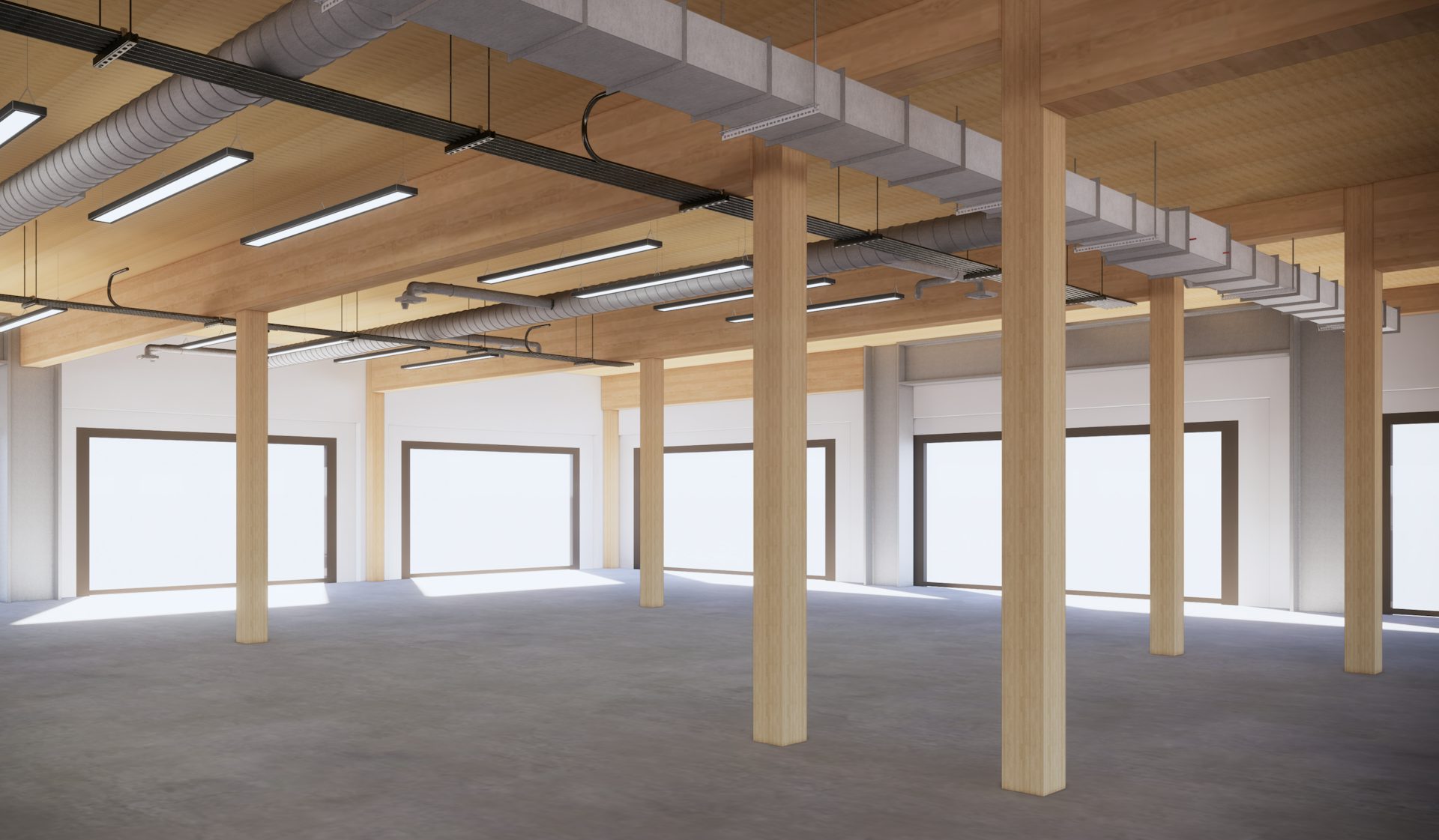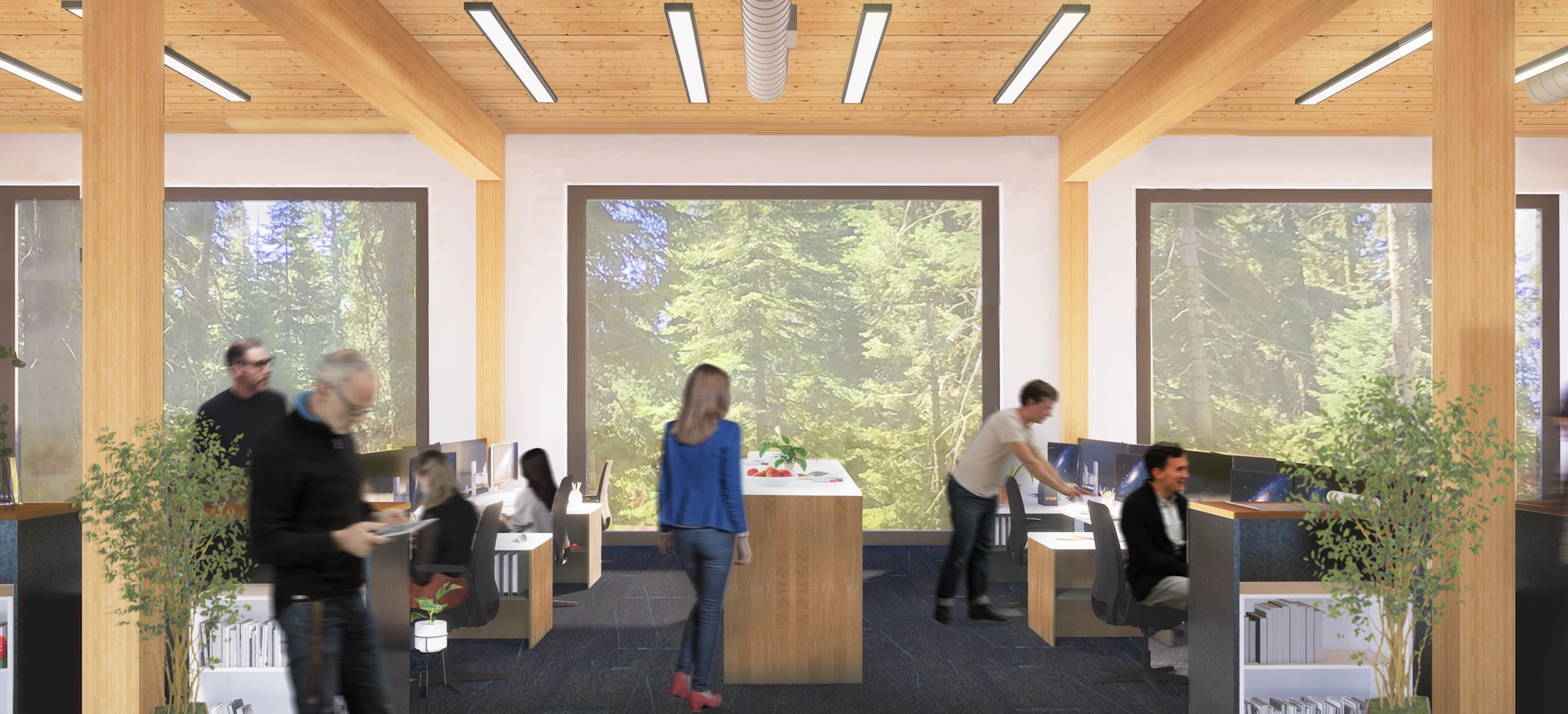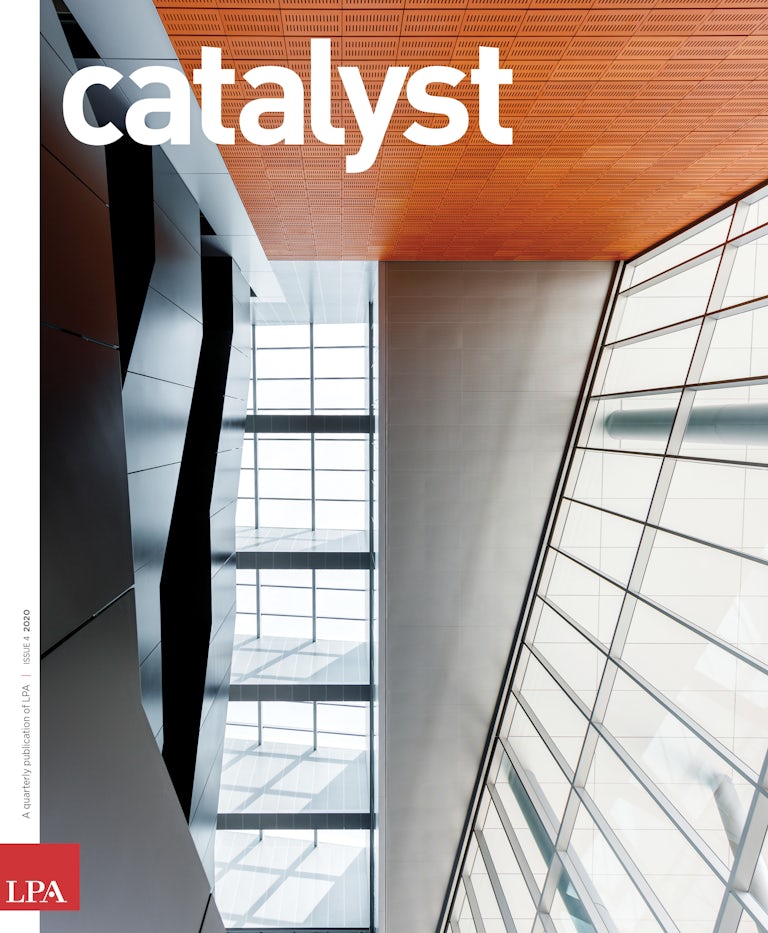The growing popularity of mass timber as a sustainable building material is raising many questions about its potential role in future projects. Can it replace steel? Will it save money? How does it add value to a project?
A group of LPA designers recently embarked on a research project to examine the potential for mass timber to change the dynamics of a traditional office building.
“Mass timber is a really great opportunity for a developer to make a statement when it comes to sustainability,” says LPA Designer Scott DiCesare. “There is an opportunity to create a different type of project that stands out in the market.”
Mass timber, which includes cross-laminated timber (CLT), offers advantages beyond simply its ability to replace the carbon footprint of steel or concrete. Use of the structurally engineered wood can shorten construction times and bring projects to market sooner. Mass timber also creates a natural, warm environment, the type of space that can boost performance and well-being, according to recent studies.
The designers chose to develop a prototype for a mass timber office that could be built today yet would peer into the future. It would comply with current code confinements and industry standards while meeting client expectations and making economic sense. An existing three-story, 79,200-square-foot steel building in a commercial zone in Irvine, California, was chosen as a model. The building shell is typical of many industrial or office park layouts, with 15-foot floor-to-floor heights, a concrete-filled deck and steel moment frames on a 30-foot-by-30-foot grid.
The designers converted the building into a mass timber structure, utilizing best approaches to the material in construction, structural efficiency and architectural and planning concerns. The redesign aimed to expose as much timber as possible, while maintaining a five-foot planning module for multiple tenants and keeping the same building height. The architectural goal was to maintain the grid, open-office floor plan and flexibility found in many commercial office developments.
An Office Made of Wood
LPA designers explore the challenges and opportunities of using mass timber for a traditional core-and-shell office project.

Early in the process, the team brought in designers from LPA’s other disciplines, including engineers and interiors designers, to further explore the issues. Problems were immediately identified, forcing the designers to rethink the design. For one, structural engineers concluded that the typical 30-foot-by-30-foot grid designed for steel was not feasible for mass timber because the girders needed to support the weight would be too deep to maintain the 15-foot floor-to-floor height.
“Mass timber is a really great opportunity for a developer to make a statement when it comes to sustainability. There is an opportunity to create a different type of project that stands out in the market.” - Scott DiCesare, Designer
The mechanical loop was the biggest hurdle, says LPA Structural Engineering Designer A.J. Tezveren-Johnson. Deep penetrations of the mass timber can affect the structural integrity. Framing layouts need to be changed and mechanical systems reconsidered. “This is something designers need to consider,” Tezveren-Johnson says. “We learned you really need a coordinated effort between the different disciplines to optimize the overall structural layout.”
Acoustics were another issue. A wood-based structure creates a markedly different audio environment. The sound of footsteps can carry through the building. An acoustical engineer was brought in to help design the floor assembly to mitigate any issues. It helped that the chosen design used a thicker CLT slab with a concrete topper, DiCesare says. “Depending on your grid depths and the type of building you’re putting together, the floor assembly is really critical to produce a comfortable acoustic environment,” he says.
The finished design uses more columns and shrinks the layout to a 20-foot-by-25-foot grid, without sacrificing the open floor plan. No workspace was lost in the design, which stuck to the standard five-foot planning module. “We had to think creatively about how to integrate the architecture, structural and mechanical to keep the open floor plan,” Tezveren-Johnson says.

To assess the benefits of the mass timber design, a life-cycle analysis was conducted comparing the existing building to the redesign. The results showed that CO2 emissions would drop to 1.4 million kg of CO2 from 2.4 million, a 40 percent decrease in embodied carbon.
Further analysis found that the optimized grid spacing with maximized panel spans reduced the overall construction cost. While CLT is expensive, the material costs are largely offset by the reduced cost of finishes and the expedited construction process, which can reduce delivery time by months. Overall, the study found that, for this type of commercial office building, CLT adds about $10 a square foot compared to a typical steel-and-concrete structure but that the costs can be offset by reduced construction time and lower costs for finishes, since the structure is left exposed.
“You may have a $10-per-square-foot increase in cost, but you may be able to see the building six months to a year sooner depending on what the size of the structure is,” Tezveren-Johnson says.

“We learned you really need a coordinated effort between the different disciplines to optimize the overall structural layout.” - A.J. Tezveren-Johnson, Designer
The wood can also add value in other ways. The columns and exposed wood become an architectural feature, creating the type of natural setting that tenants appreciate. At a time when concern about health in the workplace is top of mind, a wood environment can improve health, well-being and air quality.
The cost of the wood should decrease in years to come as supplies increase, Tezveren-Johnson says. Local jurisdictions will also improve their code approvals, helping to make mass timber a viable alternative for office projects.
“We’re at the very beginning of this being feasible,” Tezveren-Johnson says. “And it’s only going to become more and more common as prices come down and we gain additional code approval.”

Making Mass Timber Work for an Office Building
LPA designers examined the effects of using cross-laminated timber (CLT) as the primary building material for a core-and-shell office building. A typical three-story, 79,200-square-foot steel building was converted into a mass timber structure, utilizing best approaches to construction, code regulations and the typical goals of a commercial office complex. The study analyzed the effect on the cost of construction, workplace design and employees’ health, in addition to environmental benefits.
1: FLOOR ASSEMBLY
The floor is 7-ply CLT with an acoustic mat, a 1 1/2-inch concrete topping and a layer of plywood sheathing to meet code.
2: MECHANICAL DISTRIBUTION
The main girders are cantilevered to create a space for the main mechanical duct. The smaller ducts distribute systems in between the larger girders.
3: LAYOUT
The five-foot planning module is maintained by using 7-ply CLT to create 20-foot spans. The typical 5-ply CLT has an 18-foot limit.
4: SINGLE-SPAN SLAB
CLT panels span between beams. The framing methodology allows for long sweeps of mechanical runs, which can keep the mechanical zone within the structural depth.
5: A CONNECTION TO NATURE
The exposed wood creates a warm and natural aesthetic, which research shows can improve health and well-being. The wood structure doesn’t require expensive finishes and can cut construction times.
6: HYBRID CONSTRUCTION
To satisfy current code, the building maintains steel moment frames. In the future, these could be replaced by CLT shear walls, for an all-timber structure.
7: OPEN OFFICE GRID
The design uses more columns and shrinks the layout to a 20-foot-by-25-foot grid, without sacrificing the open floor plan. No workspace is lost in the design, which sticks to the standard five-foot planning module.















